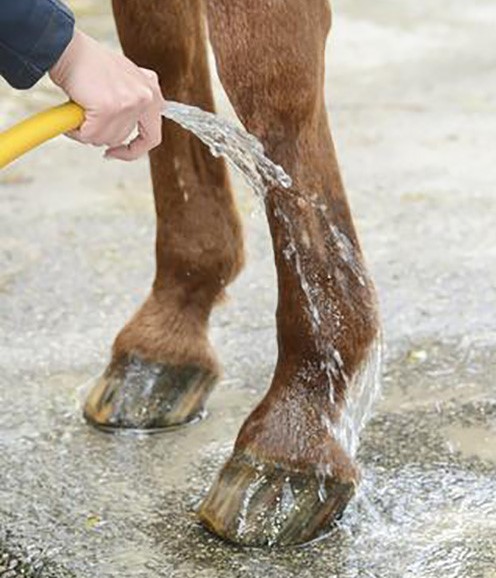Work with your veterinarian and farrier to come up with a program that best seems to help your horse.
Managing mild laminitis.
For instance the results of a three year survey of cases and results presented at the 2014 american association of equine practitioners convention have shown some remarkable results.
Equine laminitis managing pasture to reduce the risk katy watts chris pollitt.
Horses suffering from insulin resistance ir and or cushing s disease as well as horses and ponies with the easy keeper phenotype are often overweight or obese.
Stem cell t herapy for laminitis horse stem cell therapy holds a promising chance for equine laminitis treatment.
Mild clinical laminitis where the horse shows a slight shortening of stride feels his feet or is pottery on hard or stony ground and finds it difficult to turn but seems normal on soft ground and in straight lines to.
A horse with acute laminitis is generally exceedingly painful and it s up to the veterinarian and.
Your veterinarian may be able to advise you on new therapies that may include standing your horse in ice water to prevent the onset of laminitis after a predisposing cause such as a retained placenta or a known grain overload.
Also feed your horse beet pulp so it s getting enough fiber which helps prevent laminitis flare ups.
Tips for managing acute laminitis.
Whilst exercise alone will not prevent laminitis happening to susceptible horses and ponies eating the wrong grass the right diet and pasture management will without any exercise.
You can turn horses with mild laminitis out onto soft pasture with other animals to encourage them to keep moving.
Some horses that develop laminitis make uneventful recoveries and go on to lead long useful lives.
Pain management may include drugs special bedding or special shoes.
To manage a laminitis prone horse replace all of your horse s grain based feed with hay since excessive grain can cause laminitis.
Laminitis is a medical emergency and horses should be seen by a vet so that they can receive treatment as soon as possible.
Rocked back laminitic horse stance and unable to move.
Feeding management prevention we must carefully manage pasture turnout roughage and grain intake in horses and ponies that are at risk of developing laminitis or are currently affected.
Various medicines can be given to control the pain including non steroidal anti inflammatory drugs nsaids such as phenylbutazone bute or flunixin and opiates like morphine and pethidine.
You can also help your horse by limiting how much it grazes since too much grazing can cause laminitis.
For all horses that received a stem cell therapy for equine laminitis treatment.

